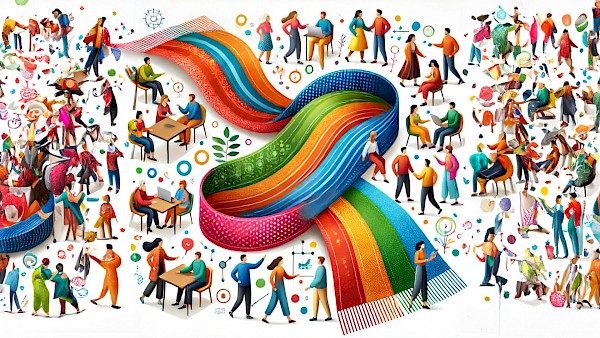Episode transcript The transcript is generated automatically by Podscribe, Sonix, Otter and other electronic transcription services.
Hi everyone, here is Ricardo Vargas and welcome to the 5 Minutes Podcast. Today, I would like to talk about the SCARF model. It was created by the neuroscientist David Rock, and I want to talk about this this week because I've been talking a lot about artificial emotional intelligence recently. It is the use of AI to detect emotions and handle them; I would say not pragmatic tasks and not analytical tasks but tasks more complexly related to human behavior. Why? Because, as a project manager, the central piece of what we do is related to how we manage people. The Scarf is an acronym for status, certainty, autonomy, relatedness, and fairness. So, let me go into each of them. So why should we care as a project manager when handling a team or handling a group of people, or in our interaction with different people about status, it refers to an individual relative importance comparing to the others. We at SPM need to use the status to recognize and celebrate team members' achievements, providing opportunities for growth and making sure that every single one feels valued. This will boost morale and motivation, and in the end, we'll deliver better. So you need to understand the status of every single one on that team. The second aspect is certainty. Why? Because people prefer predictability and clarity, people truly do not like the concept of volatility. And I know that this may sound the opposite of what I say because most of the time, we are talking about volatility at an extreme level. So what do we need to do? We need to bring predictability to the best possible level.
As a PM, we can foster certainty by doing what by defining clear project goals, defining roles, responsibilities, timelines, and budgets, and providing regular updates and transparent communication on the project process. And this will reduce anxiety and keep the team focused and engaged. So try to remove any source of uncertainty in the best way you can. I know it's impossible for you to remove everything, but you need to work towards that because if people are not clear on what is expected from them, there is a risk that people will start to feel very anxious about: am I doing right? Is this what is expected from me or not? And this drives me to the third one, it's autonomy. It's the sense that you control the events. And as a PM, we can enhance autonomy by giving our team members ownership of their tasks and giving them the flexibility to approach the work in their own way. It's the opposite of micromanaging. Micromanaging is the removal of autonomy. When we let people feel this ownership, we will empower the team, encourage innovation, and increase job satisfaction, and these will give much less anxiety and much more morale and motivation to the team. The next one is relatedness. It's the sense of belonging. It's the sense that you are part of a team that you are not alone. And it creates an inclusive environment where everyone feels as part of the project is not just a group of people, it's a team. And how you can do that by fostering strong relationships and encouraging collaboration.
And this will create in the team an environment where you will see much more cooperation and much more focus on solving the problems and not just creating problems. And the last but not the least is fairness. And this is maybe self-explanatory. People need to be treated fairly. They need to see that your decision-making process is transparent. You are distributing resources in a nice and honest way. You are addressing any concerns without bias, you know, being fair and honest. This will reduce stress and will create a much more positive team. So why I'm saying this? Regardless of whether you are using AI tools to detect mood and disease, it is still and will be, in my view, for a good long time, the work of what it is to be a project manager. I was saying another day most of. The problems I handle in my daily work are human problems. I don't recall the last time I had a failed project that the reason why, oh, the tool you use did not work. No, it's most of the time conflicts, lack of motivation, and lack of commitment. Why? Many times, we do not clearly understand these principles in our daily work and how we handle people. So take a look on the web. There are many things on the scarf model. It's a very, very interesting model for helping you frame your mind and the way you communicate with others in your team. I hope you enjoyed this podcast, and see you next week with another 5 Minutes Podcast.

